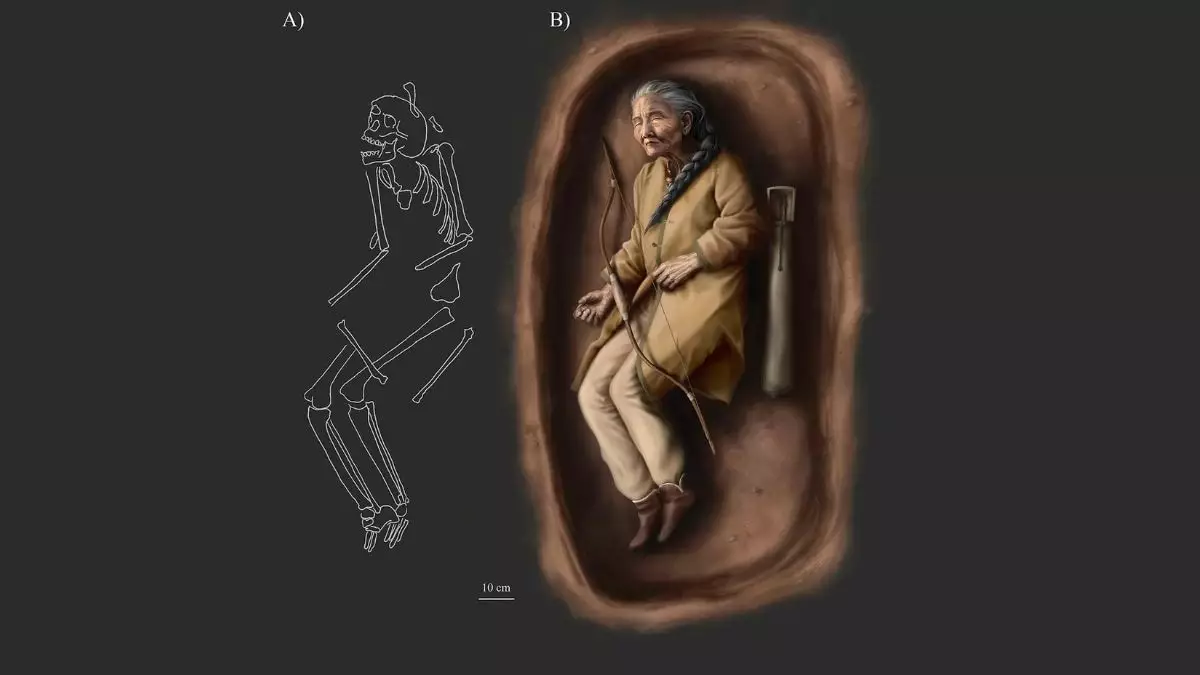Recent excavations at the Sárretudvari-Hízóföld cemetery in Hungary have yielded a remarkable discovery: the first verified instance of a female burial containing weapons from the 10th century in the Carpathian Basin. This significant finding questions established perceptions regarding gender roles during the tumultuous era of the Hungarian Conquest, when mounted archers and military conflicts were commonplace. The skeletal remains, along with an array of grave goods, indicate a complex societal structure that included women in roles that have traditionally been associated with men.
The archaeological team, spearheaded by Dr. Balázs Tihanyi, documented an assortment of items within the grave, such as a silver penannular hair ring, bell buttons, a bead necklace, and various archery implements like an arrowhead and quiver fragments. Collectively, these artifacts illustrate a blend of typical masculine and feminine burial items, suggesting that the individual, designated as SH-63, occupied a unique position in her society. However, the researchers maintain a cautious approach in interpreting this find. The presence of weaponry does not automatically equate to SH-63 being a warrior, reinforcing the notion that societal roles were nuanced and multifaceted.
Caution Against Overinterpretation
While the discovery has garnered considerable attention, experts emphasize the importance of careful analysis before drawing conclusions about SH-63’s status. The skeletal analysis revealed notable joint alterations and trauma, suggesting potential involvement in activities such as horseback riding or weapon handling. Yet, the research team warns that these indicators are not definitive proof of martial engagement; they could equally stem from daily activities unrelated to combat. This notion highlights a broader narrative: understanding the individual’s life during the Hungarian Conquest necessitates a holistic view of their societal contributions, rather than a narrow focus on the possession of weapons.
This archaeological breakthrough raises profound questions about gender roles and societal hierarchies in 10th-century Hungary. The unique burial of SH-63 suggests that notions of femininity and masculinity were not as rigidly defined as previously thought. By unearthing these artifacts, researchers begin to paint a more intricate picture of life during this period, revealing that women may have been involved in activities traditionally reserved for men. This complexity necessitates further investigation, as additional comparative analysis with similar burials from the same era is warranted.
Looking Forward: Advancing Historical Understanding
The implications of this discovery extend beyond just the case of SH-63; they prompt a reevaluation of how historians and archaeologists interpret gender roles and social structures in historical contexts. The team plans to conduct further studies that will enrich our understanding of the era, aiming to contextualize SH-63’s burial within the broader framework of 10th-century Hungarian society. With ongoing research, we may soon uncover more about the intricate tapestry of life in which both genders played pivotal roles, challenging long-standing narratives about the past.


Leave a Reply